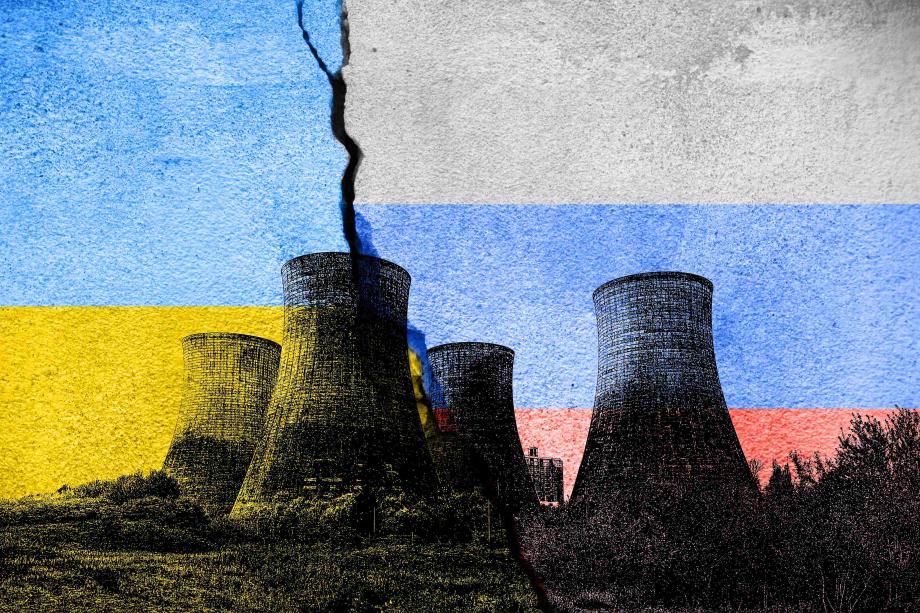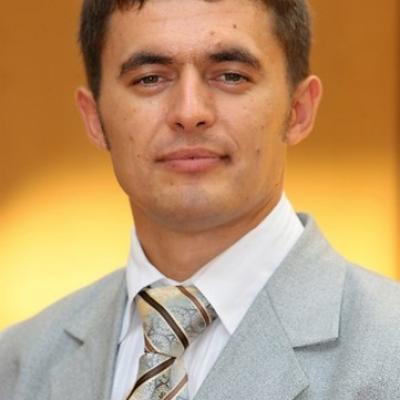Ukraine’s Energy Sector as the Subject of Russian Attacks

During Russia’s full-scale aggression against Ukraine, Russia has used energy infrastructure to invade, cover their military facilities and troops, as well as cause humanitarian catastrophe by destroying generation facilities and networks. October 2022 was a period of incredibly massive Russian attacks against Ukraine’s energy sector, again characterizing the invader as a terroristic state and as criminals. Intensive hostilities in the Kyiv, Chernihiv, Sumy, Kharkiv, Lugansk, Donetsk, Zaporizhzhia, Kherson, and Mykolaiv regions during the first months of the war resulted in considerable damage to the gas and electricity networks of regional distribution companies.
They were caused by intensive shelling and direct combat actions, deployment of heavily armoured vehicles, artillery, and multiple rocket launchers. After the Ukrainian Armed Forces liberated territories, most of the damaged infrastructure was repaired or replaced. However, this did not apply to territories temporarily occupied by Russians or under ongoing active combat actions. Generally, grid damages could be characterized as a combat follow up with no clear intentions or responsibility.
At the same time, Russia launched massive attacks against energy infrastructure with no military facilities that first provide basic utility services to civilians. Through these attacks, several thermal power plants were heavily damaged near the frontline in Lugansk and Donetsk regions, namely Lugansk TPP and Vuhlehirsk TPP, as well as several big solar and wind power stations in the Zaporizhzhia and Kherson regions. Russia used Chornobyl and Zaporizhzhia NPPs to launch attacks against Ukrainian forces and protect itself against Ukrainian counterfire and offensive. Russian mercenaries have uncontrolled access to
spent nuclear fuel storage facilities, enhancing the risks of nuclear materials proliferation, possible accidents and pollution. Forced to retreat from a substantial part of temporarily occupied territories, Russians are now threatening nuclear strikes or “dirty bomb” deployment.
In October 2022, Russia began attacking civil energy infrastructure to cause massive blackouts and disrupt Ukrainians’ regular utility services during the heating period. This caused new migration waves, social unrest, and enforcing authorities to seek a peaceful solution on Russian terms. Using ballistic and cruise missiles as well as kamikaze drones, numerous energy infrastructure objects were targeted throughout many cities, including the electricity substations and cogeneration facilities of municipal district heating companies. To keep the energy system functioning, Ukraine introduced demand-regulation measures and stopped electricity exports to the EU, suffering additional economic and human losses far away from war areas.
Owners and operators of energy infrastructure in Ukraine put all possible efforts into repairing and maintaining their infrastructure in areas of active warfare and after Russian missile attacks. This maintenance requires substantial financial resources and specific technical equipment. Since the start of the full-scale invasion, most of these expenses have been bared by Ukrainian energy entities. There is an instrument of support ongoing urgent needs the Ukraine Energy Support Fund, set up by the Energy Community Secretariat upon request of the European Commission and in agreement with the Ministry of Energy of Ukraine. Ukrainian energy enterprises have launched partnerships with many European partners for direct humanitarian aid in the form of materials, spare parts, and technical equipment used to repair networks and restore energy supply.
Massive damages to energy infrastructure require a rapid response with a comprehensive renovation strategy which should also meet energy security requirements and the sustainability criteria of the European Green Deal. The response should also consider local benefits, such as available energy resources, including gas, coal, RES potential, existing networks and grids, a lifetime of generation capacities and the dispatchability of the reconfigured energy system. The renovation requires substantial financial resources, yet it simultaneously builds a solid basis for future long-term energy cooperation with the EU.
The short-term cooperation goals include:
- The support to Ukraine’s energy enterprises through the direct supply of equipment and spare parts and via the Ukraine Energy Support Fund to buy necessary materials;
- The coordination of work at the level of transmission system operators to ensure emergency support and the restoration of supply in cases of heavy damages and blackouts;
- The promotion of economic cooperation, including the utilization of Ukraine’s free gas storage capacities for more reserves and flexibility of supply in CEE;
- The acceptance of temporary restriction measures imposed by Ukrainian authorities on the export of electricity, wood and other energy resources due to the internal scarcity and the unpredicted nature of future damages and demand.
Medium-term goals include:
- The development of an energy security architecture in collaboration with European neighbours that will meet ongoing and future levels of threats, including physical damage by conventional weapons and cyber-attacks as well;
- The support and supervision of legal and regulatory amendments in Ukraine to enable the rapid development of distributed energy generation and production in Ukraine, as well as the balancing and reserving capacities based on modern technologies, taking into consideration security threats;
- The stimulation of legal amendments enabling effective judicial service, investment protection, equal rights, and transparent conditions for private entrepreneurs in Ukraine, thus making direct foreign investments and the use of domestic resources, land, and labour potential possible;
- The creation of clean energy production clusters in Ukraine, unlocking the potential of biomethane, green and low-carbon electricity, sustainable solid and liquid fuel production, as well as background for green hydrogen hydrolysis;
- The setting up of a long-term cooperation strategy in the energy sector, enabling reasonable export volumes, thus contributing to the European energy security and affordability of resources while not harming Ukraine’s environment;
- The facilitation of ambitious energy efficiency targets for public buildings, municipal building stock, industrial assets, and the provision of financial resources to start renovation projects and construction of modern settlements, especially in areas of heavy fighting and destruction of infrastructure to build up showcases of sustainable urban spaces;
- Help access the integration potential of municipal conglomerations and industrial clusters into a comprehensive energy supply system. In particular, the use of waste for the production of heat, electricity and biomethane.
Given its EU candidacy status, Ukraine can already begin amending legal and regulatory bases per the European Green Deal baselines if it gets guarantees of comprehensive support from the EU and other partners and reliable timelines for switching from available to more sustainable energy resources. At the same time, Ukraine should begin its homework, in particular, removing administrative and regulatory hurdles for sustainable projects and the inflow of direct foreign investments. This is important to overcome recent energy policies’ negative effects on renewable energy sources and restrictions caused by war hostilities.
Energy efficiency measuring on household and commercial levels should become a core priority for state support in future consumer protection policies. The state should gradually waive regulated or subsidized energy prices and focus on the targeted support of vulnerable consumers. In turn, vulnerable consumers should be defined, based on certain conditions, such as maximum living space, amount of energy accepted for coverage by targeted support and active engagement in energy efficiency and income increasing measures, proposed by competitive authorities.
